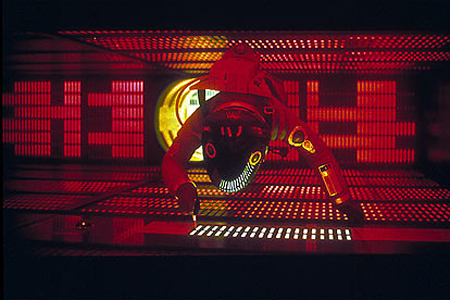Kinect Weighs Astronauts In Space Just By Looking At Them. HAL Lives.
Astronauts can lose a lot of mass due to muscles atrophying and shit in space. What a conundrum! How do take measurements of their bodies to ensure they stay fit? Why, activate HAL!…or the Kinect. It will scan them. Track them. Play chess with them.
New Scientist:
ASTRONAUTS will soon be able to stay fit thanks to a body tracking camera system built into Microsoft’s Kinect gaming sensor, which helps calculate their weight in zero gravity.
Even during missions that last just a few weeks spacefarers can lose up to 15 per cent of their body mass because their muscles atrophy due to lack of use. To prevent this physical decline, crew aboard the International Space Station (ISS) typically spend 2 hours exercising per day.
Monitoring weight in space is not easy, though, since traditional scales don’t work in orbit.
The problem was partially solved in 1965 by William Thornton, an American astronaut and doctor who came up with a way to measure objects using oscillating springs. Astronauts still use a similar device today, in which they have to mount a stool fitted with a spring that raises and lowers the stool at a frequency that depends on the mass it is acting against.
The trouble is that this system is bulky and a lot of energy is required to power the moving stool, using up two of the space station’s most limited resources. Now Carmelo Velardo, a computer scientist at Eurecom in Alpes-Maritimes, France, says his new system could simply be integrated into the station itself.
“Something that you could easily put inside the walls of the space station would free up the space for other equipment or experiments,” Velardo says.
Along with colleagues at the Italian Institute of Technology’s Center for Human Space Robotics in Torino, he used the Kinect’s depth-sensing ability to create a 3D model of an astronaut. Then the team ran their calculation using a statistical model that links weight to body measurements based on a database of 28,000 people. Velardo’s estimates are 97 per cent accurate, corresponding to an average error of just 2.7 kilograms, which is comparable to the current method used on board the ISS.
“This technique appears feasible, although not without some effort,” says John Charles, chief scientist on NASA’s human research programme in Houston, Texas. He says that microgravity shifts water around inside astronauts’ bodies, which means their density may not match the assumptions in the model.
Charles adds that combining the idea with the existing weighing system might prove more beneficial, as the Kinect measures body volume while the stool measures mass. “The combination would provide insights into changes in body density that might be illuminating,” Velardo agrees.
[cont]
The Kinect system has yet to be tested in space, due to the high cost of launching new equipment. But Velardo hopes to try it out soon aboard a parabolic aircraft flight that simulates the microgravity found in orbit. He will present the research at the Emerging Signal Processing Applicationsconference in Las Vegas, Nevada, next month.
Pretty rad, yo!




